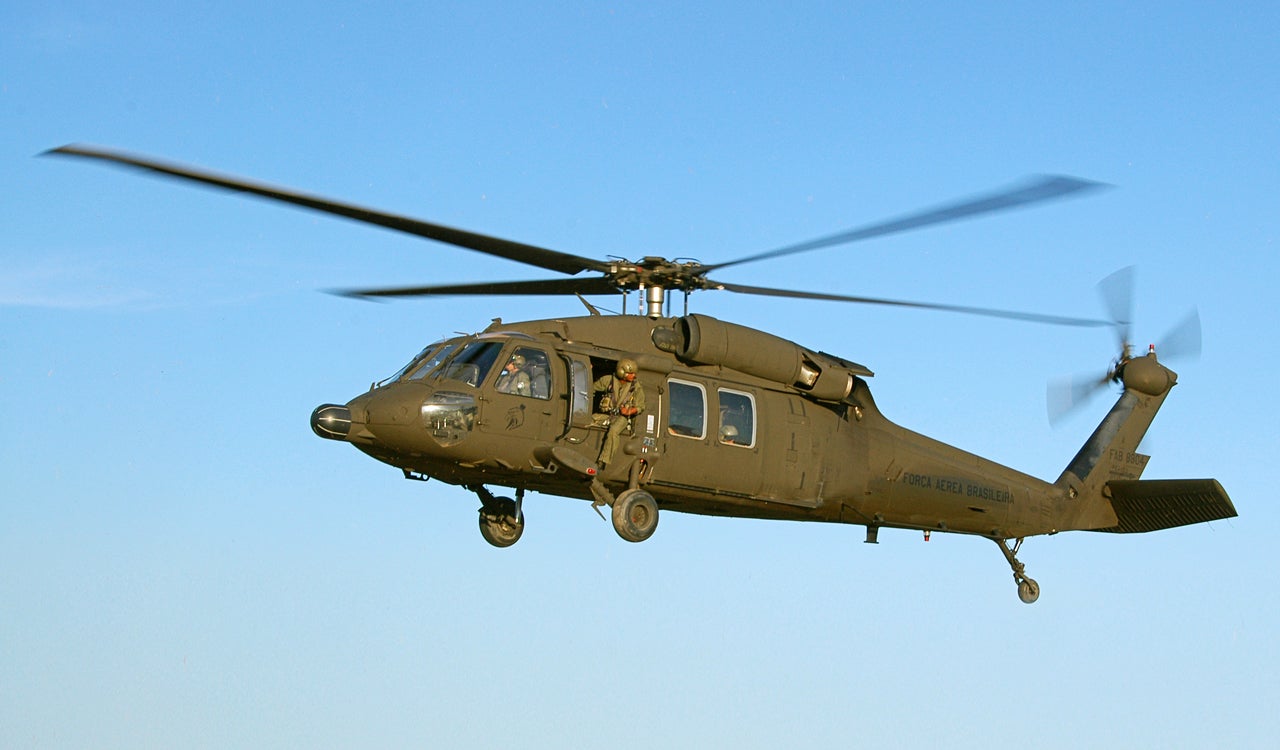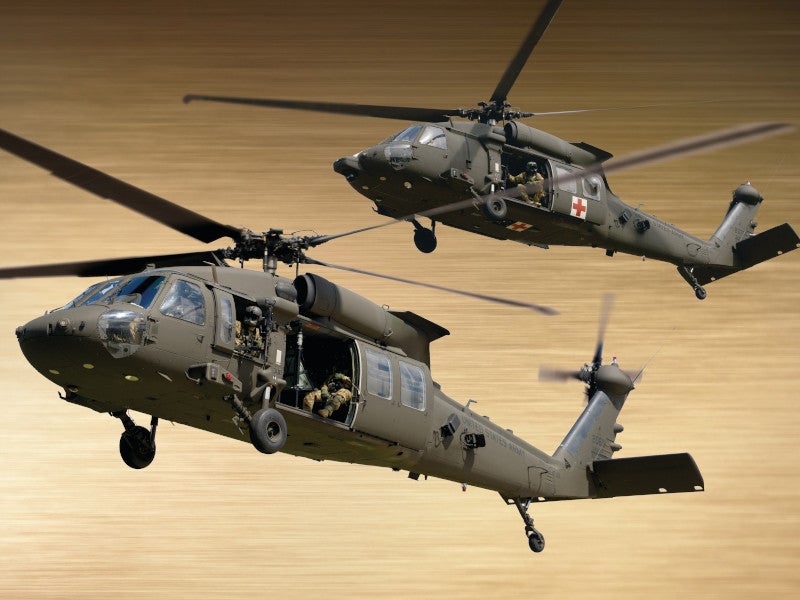UH 60 Black Hawk Helicopter Versions and Their Usages
UH 60 Black Hawk Helicopter Versions and Their Usages
Blog Article
Exploring the Cutting-edge Innovation Behind Aircraft Layout and Design
The field of aircraft layout and engineering is witnessing a transformative change driven by innovative modern technologies that enhance effectiveness, sustainability, and efficiency. Advanced materials such as carbon fiber compounds and titanium alloys are setting new requirements, while wind resistant developments and fabricated intelligence are streamlining procedures and improving outcomes. As the market grapples with the obstacles of environmental responsibility, growths in lasting air travel technologies assure to reshape the future. However, the implications of these developments prolong past efficiency metrics; they might redefine the actual nature of air traveling. What might this imply for the market all at once?
Advanced Products in Airplane Layout
Just how can the assimilation of innovative materials reinvent airplane layout? The unification of advanced products, such as carbon fiber compounds, titanium alloys, and progressed ceramics, plays a critical function in boosting aircraft efficiency and effectiveness. These materials provide superior strength-to-weight proportions, enabling suppliers to decrease total airplane weight without endangering structural stability. This reduction in weight directly adds to enhanced gas efficiency and raised haul capacity.
In addition, innovative products show enhanced resistance to rust and exhaustion, causing lower maintenance prices and extended life span. The usage of titanium in critical elements assists stand up to severe temperatures and tensions, while carbon fiber compounds provide adaptability in layout and production processes. This versatility permits even more wind resistant forms, adding to premium efficiency attributes.
Additionally, the assimilation of clever materials, which can alter residential or commercial properties in reaction to external stimuli, opens up new methods for adaptive systems in airplane layout. uh 60. These innovations promise not only to boost safety and security and operational effectiveness yet also to add to sustainability efforts by lessening environmental influence through lowered emissions. In summary, advanced products are redefining the landscape of aircraft layout, leading the way for a lot more efficient, sturdy, and eco friendly aeronautics services
Aerodynamic Technologies for Performance
Wind resistant developments play a pivotal duty in boosting airplane performance, significantly affecting gas usage and overall efficiency. Advancements in airfoil design, such as the intro of supercritical wings, permit enhanced lift-to-drag proportions, lowering drag at transonic speeds. These advancements enable aircraft to preserve greater speeds with lower fuel expense, straight influencing functional prices and environmental sustainability.
In addition, the assimilation of winglets has shown reliable in mitigating vortex-induced drag at the tips of wings, even more boosting fuel efficiency - uh 60. This style adjustment leads to a reduction in wake turbulence, contributing to enhanced wind resistant performance during cruise ship conditions

Furthermore, computational fluid characteristics (CFD) devices have actually revolutionized the screening and refinement of wind resistant shapes, enabling for exact simulations of air flow around aircraft (uh 60). This allows designers to innovate continuously, making sure that modern airplane not only fulfill governing standards but also push the borders of efficiency in aviation

Function of Computer Simulations
Computer simulations have actually ended up being a vital tool in the field of airplane design, enabling designers to conduct thorough evaluations and optimizations of different layout elements. These simulations allow for the virtual screening of aerodynamic buildings, architectural honesty, and efficiency metrics long prior to physical models are developed. By employing computational fluid characteristics (CFD) and limited element analysis (FEA), engineers can forecast just how air moves around the airplane and just how various materials will respond to tension and strain.
Furthermore, computer simulations assist in the expedition of a wide variety of scenarios and variables, accelerating the layout process and reducing prices connected with physical testing. This ability not just boosts the accuracy of forecasts regarding airplane habits but likewise provides understandings right into possible style improvements that could not be instantly evident via conventional methods.

Additionally, simulations aid make sure conformity with rigorous security laws by enabling designers to determine and fix possible concerns early in the design phase. The combination of simulation innovations into the aircraft style procedure highlights the significant innovations in design methods, ultimately adding to the growth of safer, much more efficient, and eco-friendly aircraft.
Artificial Knowledge in Design
Expert system (AI) is reinventing the engineering landscape, particularly in airplane layout, by optimizing and enhancing decision-making processes design operations. Via artificial intelligence algorithms, AI can evaluate substantial datasets, discovering patterns and insights that inform design options and boost overall performance.
AI applications in aircraft style include generative layout, where formulas develop multiple style choices based on specified specifications, enabling engineers to assess a more comprehensive variety of opportunities. This not only speeds up the layout stage yet additionally makes certain that the final products satisfy strict efficiency and safety and security standards.
In addition, AI-driven anticipating analytics assist in maintenance scheduling by evaluating historical information and predicting possible failures. This positive method minimizes downtime and boosts aircraft dependability.
Additionally, AI help in simulation and modeling, making it possible for engineers to check styles under different problems without the demand for physical models. This ability shortens advancement timelines and decreases expenses connected with typical screening techniques.
Lasting Air Travel Technologies
Just how can the aviation market properly balance growth and environmental obligation? The solution exists in the fostering of sustainable aviation innovations that focus on efficiency and minimize carbon discharges. Developments such as sustainable aeronautics fuels (SAFs), which are originated from renewable energies, have arised as a critical part in accomplishing lower lifecycle exhausts. SAFs can significantly decrease the carbon impact of trips, making them a practical option to typical jet fuels.
Additionally, developments in airplane style, such as the development of lighter materials additional resources and more aerodynamically effective shapes, add to enhanced fuel performance. Electric and hybrid propulsion systems are likewise obtaining traction, using a pathway to lower dependence on nonrenewable fuel sources and reduce greenhouse gas exhausts.
The assimilation of these technologies is supported by regulatory structures and sector cooperations aimed at setting ambitious sustainability targets. Electronic devices like data analytics and man-made intelligence can optimize trip operations, even more improving gas effectiveness. By welcoming sustainable techniques and innovations, the air travel market can not just satisfy the growing demand for air traveling yet additionally play a crucial duty in resolving environment change, guaranteeing a much more lasting future for air transport.
Verdict
The convergence of advanced materials, aerodynamic innovations, and advanced modern technologies marks a substantial development in aircraft style and design. The combination of carbon fiber compounds, titanium alloys, and AI-driven procedures not only enhances performance and performance yet likewise enhances workflows and anticipating maintenance.

Computer system simulations have actually come to be an indispensable tool in the field of aircraft layout, making it possible for designers to perform thorough analyses and optimizations of various layout aspects.The convergence of innovative materials, wind resistant advancements, and sophisticated modern technologies marks a considerable evolution in airplane style and design.
Report this page